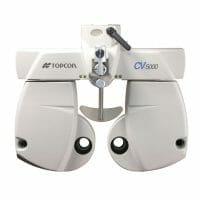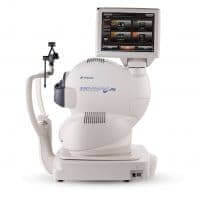Introduction
Research has shown that we spend nearly 3 hrs a day staring at PC screens and mobile devices! Furthermore, the same research shows that 35-44 year olds spend nearly 4 hours a day peering at screens. It’s no surprise then that two-thirds of computer users suffer from eye strain when working on digital devices. However, eyestrain is a fairly vague term that is often used to describe a number of potential issues surrounding the use of display screen devices. The key issues associated with these devices can be broken down into the following areas:
- Reduced blinking
- Fatigue from prolonged focusing at near
- Fatigue from prolonged convergence of the eyes
- Strain from inappropriate lighting
- Physical fatigue
Reduced Blinking
Any task that requires concentration such as reading, driving and working on a computer reduced the frequency and completeness of a blink. In fact, studies show that blink frequency reduces by five times! We normally blink around every 5 seconds. So, if you work in an office job on a computer for 7 hours you will blink only around 1000 times as opposed to a 5000 times if you were not performing a task requiring concentration.
The important question is what are the effects of reduced blinking? Well, we blink in order to spread tears over the surface of the eye. Incomplete blinking and reduced blinking will result in drying of the front of the eyes. This causes discomfort, grittiness and increased redness. Furthermore, as the tear film is also responsible for focusing light into to our eyes, a poor tear film also causes temporary blurring in vision.
Using a device that can measure the power variation on the front of the eye in real-time off the tear film, researchers and practitioners can determine the effect of various dry eye treatments. The technology, known as real-time topographic aberrometry, can be used to assess the compatibility of various contact lens materials on the eyes of patients with dry eyes. The videos below show the same dry eye patient before and after application of a dry eye eye drop.
The sudden variation of colour changes indicate instability in the tear film.
If you suffer from dry eye with the use of computers, you should try the following:
- Blink more frequently.
- Use artificial tears drops. Ensure that if you wear contact lenses that your tear drops are preservative free.
Fatigue From Prolonged Focusing At Near
When performing near work, the lens inside our eyes changes shape as result of contraction of muscles inside out eyes (called the ciliary muscle). As with any muscle, prolonged contraction causes fatigue. This is further increased if you have uncorrected longsightedness (aka farsightedness) or are over 40 where the lens loses its ability to change shape (presbyopia).
Optically, there are various methods of correction that can be prescribed;
- Glasses for concentrating during close work – if you’re under 40 and are experiencing intermittent blur for reading or find that distance becomes blurred for a few seconds after near work.
- Multifocal lenses (progressive or ‘Varifocal’ lenses) – if you’re over 40, these allow you to see at distance, intermediate and near. However, there are many different types of multifocal lenses – some don’t work as well for computer use.
- Occupational lenses – these are specially designed lenses multifocal lenses designed specifically for office use. View the video below to see how they may relieve visual fatigue at work.
Fatigue From Prolonged Convergence
As we look at near objects, our eyes turn in and converge. This action requires some of the external muscles of the eye to contract which over a prolonged period causes fatigue. Some people are more predisposed to this fatigue as a result of the natural resting position of their eyes. During your eye examination your practitioner will determine whether your eyes are likely to be able to cope with prolonged convergence. There are number of exercises that can be prescribed to help fine tune those muscles (it’s a bit like physiotherapy for the eyes).
Strain From Inappropriate Lighting
Having the correct lighting in your work environment can reduce the risk of eye strain significantly. It is recommended to move the computer so that any bright lights or open windows are not directly behind the screen (in order to prevent glare off the screen). People often incorrectly think that having an anti-glare coating on spectacles reduces glare from the display screen, actually, the anti-glare coating reduces reflections of the screen off the spectacle lenses themselves. Anti-glare lenses are also great for the cosmetic appearance of your glasses!
Physical Fatigue
To reduce fatigue, we advise that you should take regular breaks from your devices – every 20 minutes, take a 20 second break and look at objects around 20 feet away. We understand that on a normal working day this could be difficult, however if you can relax your eyes at regular intervals, eye strain could be reduced.
It is important to have good posture by using a chair which can support your lower back. To avoid other physical pain, you should sit with your neck and head upright. Having your computer positioned at the right distance would also lower the chances of eye strain. It is recommended for your screen to be situated around an arm’s length away.
If you have any further questions on this topic, or if you would like us to discuss a query of yours, please feel free to contact us at reception@2020eyes.co.uk.
General Advice
Here are a few pieces of advice for anyone working on a computer screen for long periods:
- Get your eyes examined every year!
- Wear the correct spectacle lenses – your optometrist can prescribe lenses that may help you for the computer.
- Remember the 20-20-20 rule: every 20 minutes, take a 20 second break and look at least 20 feet in the distance.









